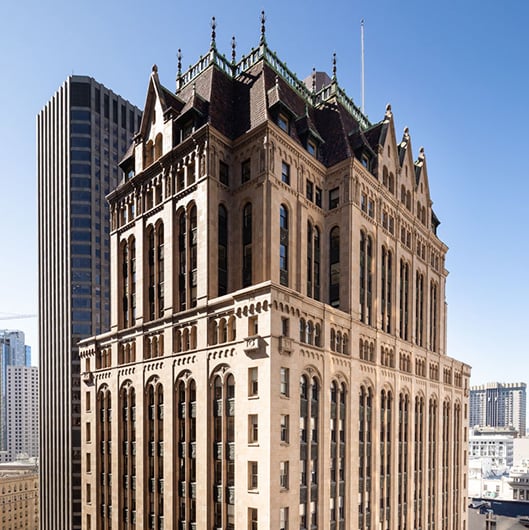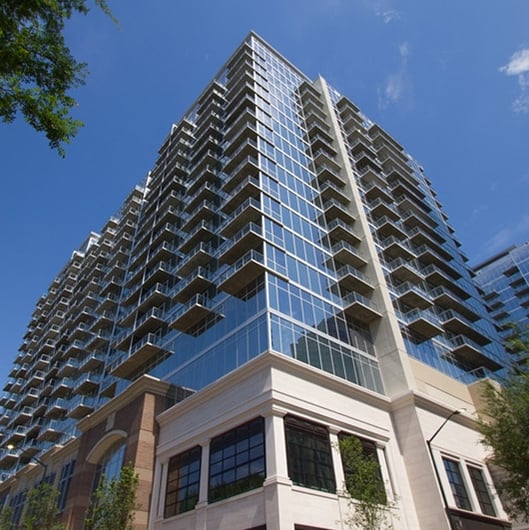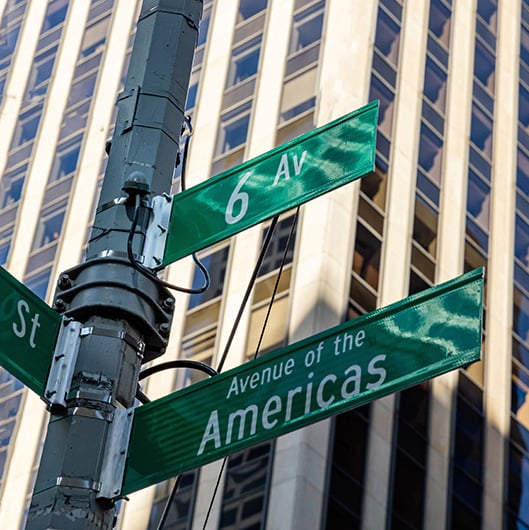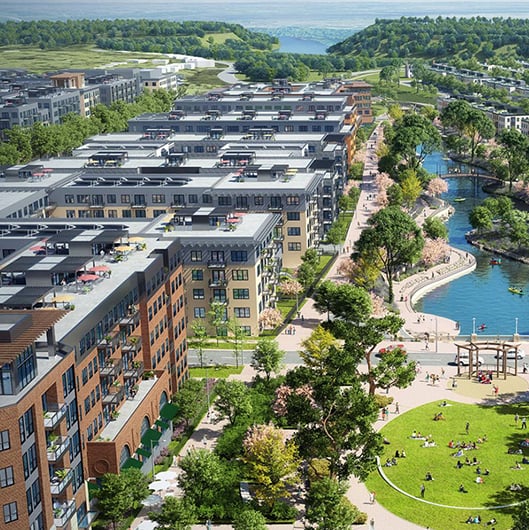Tower Place 200 – Atlanta, GA
Case Study for Tower Place 200
Client:
Cousins Properties
LEED Certification Level:
LEED O+M: Existing Buildings v3 - LEED® Gold
ENERGY STAR Score:
85
SIG team members that worked on this project:
Alyson Laura, Sustainability Maven
Scott Baker, President, PE
Building Address:
3348 Peachtree Road NE
Atlanta, GA 30326

Sustainable Investment Group’s role on this building:
-
LEED® O+M: Existing Buildings - Administration and Consulting
-
ASHRAE Level I Energy Audit
-
ENERGY STAR Verification and Sign-off
-
IEQp1 Air Calculations
-
Testing and Balancing Scope
Fun Facts
The most popular alternative commuting strategy is telecommuting. 14% of all tenants participate in either telecommuting, riding MARTA, or driving a green vehicle.
Overview:
Tower Place 200 sits next to GA 400 in the heart of Buckhead in Atlanta, Georgia. The vision set at the start of the project was, ‘High-Performance Business in a High-Performance Building.’ True to the LEED goal of whole building solutions, improvements were made in each resource impact category.
Addressing the building site is challenging for many existing buildings because the infrastructure is already established. Fortunately, Tower Place 200 was designed with covered parking to reduce the heat island impact, an urgent concern for high density sites. The established landscaping maintenance adopted green practices that avoid harsh chemicals for pest control and recycle all debris.
Water use inside the building was improved with a comprehensive cooling tower management plan and efficient restroom fixtures. The building’s annual potable water use was reduced by 32.6% from the EPAct baseline. Tower Place 200 avoids purchasing and conveying 164,000 gallons of potable water each year through efficiencies in low-flow urinals and kitchen sinks.
Nearly one third of the total points earned on the application were in the Energy and Atmosphere Section. The primary strategy is always to raise the ENERGY STAR score. The largest area of improvement identified in the ASHRAE energy audit was lighting retrofits because it accounted for 21% of the total electricity end use. $12,000 of investment pays back in 1.5 year.
Additionally, the audit recommended installing occupancy sensors, which also has a less than two year payback.
Of course, the benefit of reducing electricity consumption is reducing green-house gas emissions. LEED cares about atmospheric impacts and with careful calculations under the guidance of SIG’s technical services team, this project successfully documented Enhanced Refrigerant Management and Emission Reduction Reporting. These credits only sound tricky because they have technical names. Their real world impact demonstrates that this building is a leader in atmospheric responsibility.
Finally, to balance the impacts of necessary energy demands, the management team purchased renewable energy certificates to cover 62.5% of electrical power consumption.
Existing buildings have a constant flow of new consumables and waste cycling through it’s floors. LEED offers tons of incentives to source responsibly and reduce waste. At Tower Place 200, the management team reduced occupants’ exposure to mercury by specifying low-mercury florescent lamps.
Effort was put into reducing waste streams and there is still room to improve. 40% of on-going consumables are recycled, including plastic bottles and copy paper. 100% of furniture and electronics are recycled and that makes a big improvement to landfill size and toxicity.



